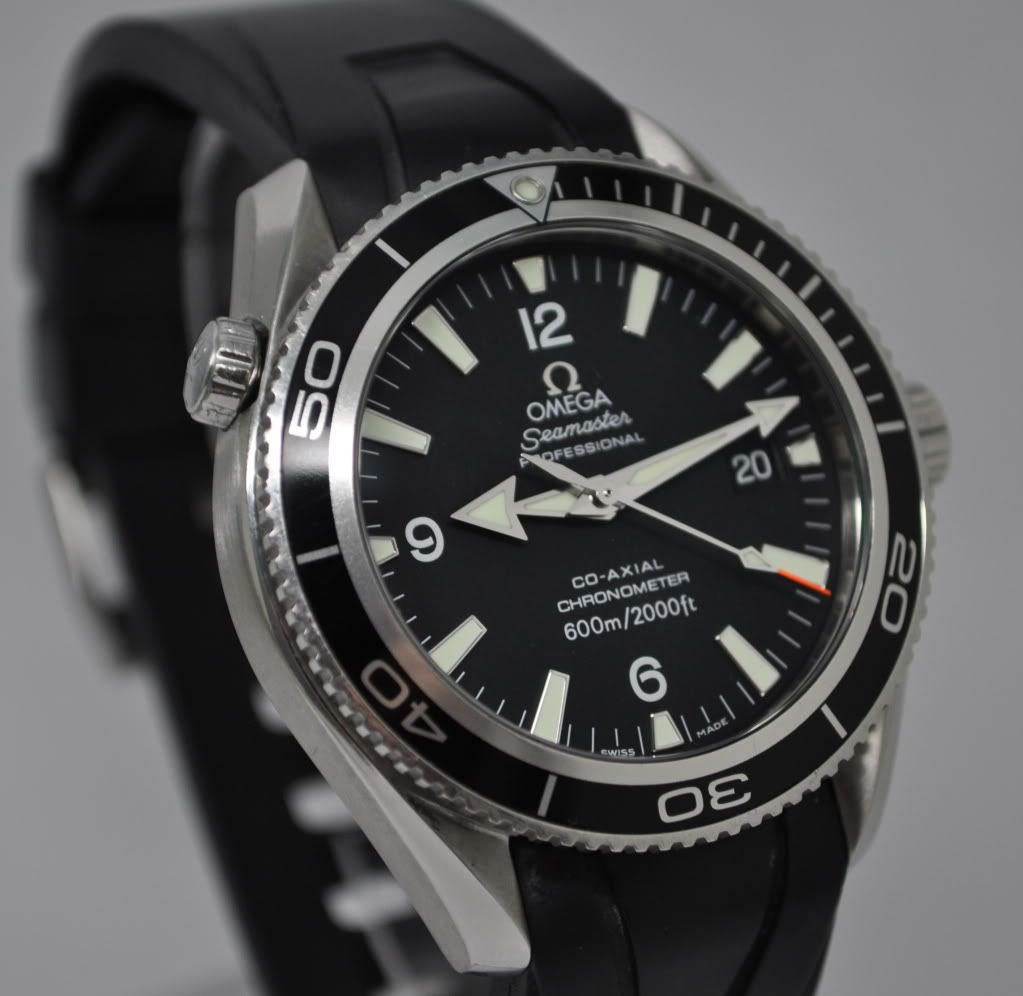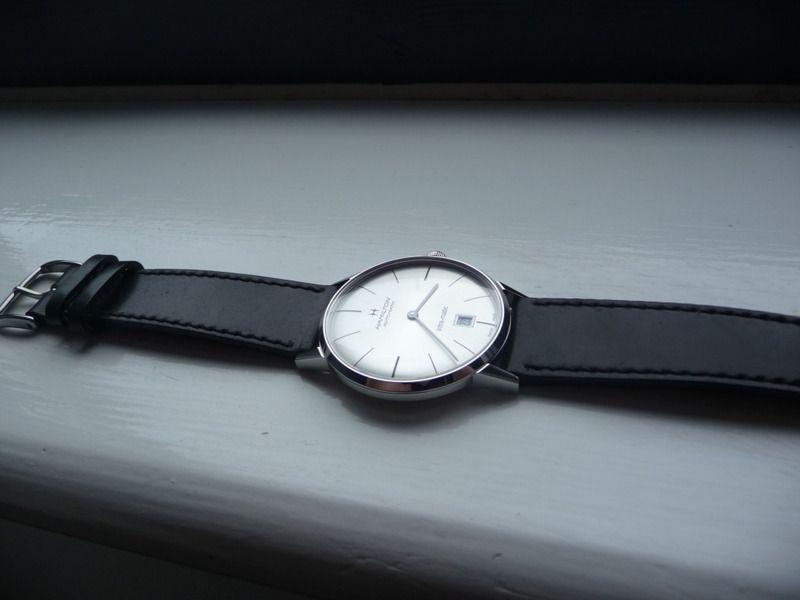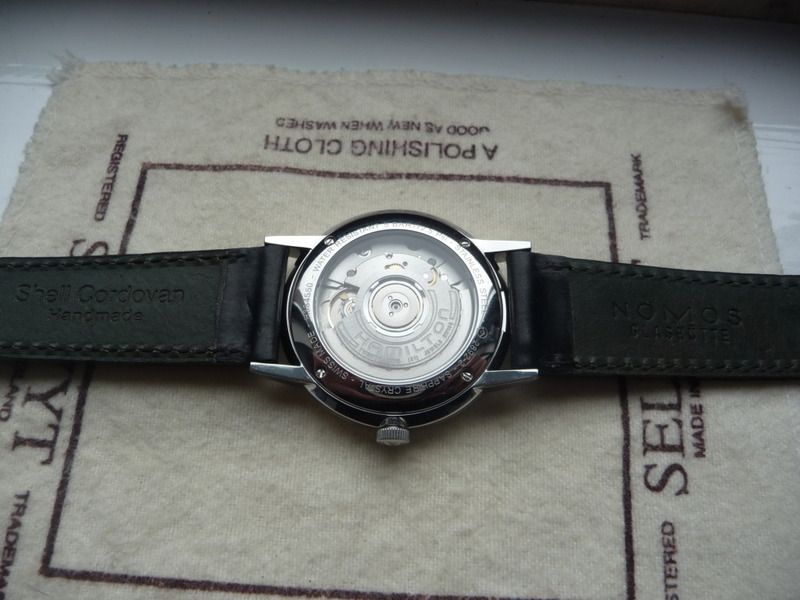Monday, June 24, 2013
Watch Radar: Pebble Smart Watch
A friend who participated in the original KickStarter campaign recently received his Pebble watch in the mail. His initial impressions are over the moon. He's especially pleased with the ability to read emails directly on the watch's e-paper screen. I'm looking forward to asking for his long-term impressions after a few weeks of use.
I held back on participating in the KickStarter campaign in part because I'm usually reluctant to be an early adopter. My consumer philosophy is to let others work out the initial kinks of product design and wait until a refined version appears on the market. This tendency compounds when certain technical aspects of a product give me pause. In the Pebble's case, the things that raised my eyebrow were its seven-day battery life, (presumably) non-sapphire crystal, 22mm band size, and dependancy on iOS / Android compatibility. The last factor could easily shift from liability to asset, depending on whether the Pebble's connectivity and native app development keeps pace with smartphone operating systems and functionality. But at a stage where only the earliest backers are just now getting their hands on the product, it's still too early to say how deep the support will run.
Also, in the end, even if the Pebble is as successful and useful as it could be, giving it a place in my watch box would only result in it competing for wrist time with the mechanicals and quartzes that currently vie against each other. For now, I'm happy to let others serve as the intrepid pioneers for what may very well be the next phase of evolution for the humble wristwatch. The decades-old technology in the automatic on my wrist suits me just fine.
Monday, June 17, 2013
Watch Primer: Watch Spotting
 |
| Image courtesy PhotoBucket user always247 |
As you journey deeper and deeper into the quagmire that is watch collecting and WISdom, the knowledge that you inevitably pick up along the way (not unlike mud on tires or barnacles on the hull) will lead to you spotting familiar watch models on others' wrists when you're out in public. In a recent outing with a couple high school friends, I spotted an Omega Seamaster Planet Ocean on one of them. A few seconds of scrutiny allowed me to determine that it was a 42mm Caliber 2500 model (from the hands, orange numbers on black dial, what appeared to be a painted bezel, and an engraved caseback - which I believe has been replaced by sapphire in the current Caliber 8500s). I would have asked about it, but we were in mixed company and didn't want to necessarily call attention to what, if purchased new when 2500 POs were still stocked, was a $4000+ watch. (Ironically, others in our party would later comment on the watch, but focused on its bright orange neoprene strap.)
It's one thing to take note of and remark on watches among friends, but what is the protocol when you spot a familiar watch on a not-so-familiar wrist? As with most social situations, it's primarily a matter of context. Crossing paths on the street? Maybe not. Waiting in a line? Maybe.
Personally, unless I can infer from the context or the specs of the watch in question that the person its attached to is another WIS, I tend to take note but not bring it up. Especially with garden variety Rolexes (Submariners and Datejusts), it's about an even chance that the person wearing it just acquired it because it's a Rolex, and may be largely uninterested - or even put off - by someone who wants to talk about the technical minutiae that WISes tend to obsess over. I have noticed, however, that a person who engages in other somewhat anachronistic personal items - e.g., fountain pens - are more likely to be interested in the details.
What has your experience been in spotting familiar models on the wrists of passersby? Have you ever approached a stranger to ask them about their watch? Let me know in the comments below.
Monday, June 10, 2013
Watch Brand Review: Hamilton
Today's reviewed watch brand occupies an interesting position in the watch world.
Identity
Hamilton began as one of the paragons of the American watchmaking industry, along with others like Elgin and Waltham. Modern American watchmakers like RGM look to Hamilton as a spiritual predecessor, even using refurbished Hamilton movements in some of their offerings. Like its peers, however, the American Hamilton fell to the wayside in the mid-20th century, though its name and branding live on as an entry-level brand in the large and powerful Swatch Group. The economy of scale that Swatch brings to bear coupled with Hamilton's market position means that it represents one of the most inexpensive ways to acquire dependable models powered by solid Swiss movements - particularly after Swatch choose to dwindle the supply of ETA movements to third-parties. As a result, Hamilton is a logical choice for many looking to inaugurate themselves into the world of Swiss-made mechanical watches.
Design
The trade-off for the attractive price points and value ratio lies in the design of many of Hamilton's offerings, which seem at times hopelessly diluted or derivative. Subtleties are also often determined by the dictates of the underlying movement - the exact opposite of what true manufacturers strive for (albeit with the luxury of price points several orders of magnitude greater than Hamilton's) - so that they appear aesthetically odd or out of place. There are exceptions; iconic designs like the classic Ventura, which have endured the test of time (even though its original electronic movement has not), and others that draw on Hamilton's history, like the Intra-Matic (though it too sheds its lauded micro-rotor movement for a more run-of-the-mill ETA 2892-2). But even those examples contain compromises: the Ventura's dial has a plasticy appearance when viewed close-up, and its pedestrian quartz movement's second hand doesn't line up with its hour marks, while the Intra-Matic's bracelet appears to be one of Hamilton's stock designs, employing friction pins where competing brands might have offered a screw-in system.
Functionality
By and large Hamilton makes up for the lumps it takes for its half-hearted designs in the functionality of its offerings. As can be expected of watches powered by time-tested workhorse movements, they do what they're supposed to. The ETA 2892-2 in my Intra-Matic may be one of the most accurate mechanicals ever to grace my watch box, which has included in-house offerings from Nomos and Rolex. Moreover, there is a certain degree of comfort in the knowledge that, should anything go wrong, the ubiquity of ETA's movements means that any watchmaker worth his salt knows how to handle them, and that replacement parts are readily sourceable. That's the hidden added cost of being an in-house snob: the exclusivity of the movement on your wrist means that you have very few options when it needs servicing or repair. Those limited options mean swallowing a bitterly expensive pill when the time comes. While this may be a non-issue to those who have the disposable income to expend on five figure - or more - timepieces, those who would have to save to afford them have to factor service costs into the overall calculus of acquisition. In this way, and for what it's worth, Hamilton occupies the "affordable" quadrant of Swiss mechanical watches.
Conclusion
While Hamilton does offer one of the best value propositions in the realm of Swiss watches, I would offer a word of caution to those who would, as a result of their relative affordability, seek to build a sprawling collection of Hamiltons or similarly priced watches. One or two can cover bases in a collection that might cost considerably more if a collector were to turn to the offerings of more prestigious brands; but once a collection comprises half a dozen or more watches in the sub-$1000 range, the total amount of money expended could have allowed for the acquisition of a single superlative watch which would likely eclipse those Hamiltons in virtually every respect. Thus, while Hamilton is a great value introduction to Swiss mechanicals, its offerings alone, I would caution, should not a collection make.
My Pick
This is probably a no-brainer: it's the Intra-Matic 38mm. It's on my wrist as I type this review, and unless another value proposition from Hamilton knocks it from its perch (I'm looking at you, Viewmatic Skeleton), it'll continue to hold the "automatic" slot of my watch box for the foreseeable future.
Monday, June 3, 2013
Watch Review: Hamilton Intra-Matic 38mm H38455151
I had thought that I'd managed to kick the watch buying habit after paring down my collection, and especially after a brief Halloween-and-November-themed excursion with the new Seiko Orange Monster SRP309 that ended with a eBay flip. But a review of the 2012 Hamilton Intra-Matic by James Stacey on A Blog to Watch (formerly A Blog to Read) put the vintage-styled automatic on my radar. I've bemoaned the trend toward larger case diameters in a previous Watch Primer post, so coming across a freshly released model under the 40mm threshold was a welcome surprise. The classic styling and silver sunburst dial were immediately attractive, as was the notion of adding an automatic back to my watch box that wouldn't break the bank, and which I would be comfortable wearing daily to work at the courthouse.
With a street price a little over $500, the Intra-Matic is also one of the least expensive options that I know of that is powered by an ETA 2892-2, a slightly thinner and more upscale movement than the ubiquitous ETA 2824. I've owned two watches in the past powered by this movement or its subsidiary seconds variant - the Omega Seamaster 2253.80, wielding a modified 2892 in its Caliber 1200, and the Xetum Tyndall, employing an ETA 2895, which is the 2892's subsidiary seconds counterpart. Both came in well above the $1000 mark, so the opportunity to pick up a 2892-powered model with bracelet for less than $600 was too good to pass up.
I found the 38mm case well proportioned for a 6" wrist, the sweet spot for which seems to reside somewhere between 34mm and 38mm. The dial is preeminently legible, such that it is readable even under low light conditions despite having no applied lume. I opted for the bracelet version because I suspected the standard-length strap would prove too long for my wrist, and had planned to use a spare black Nomos shell cordovan strap instead. The watch looks very good combined with the black shell cordovan, but I eventually opted to return it to its stock bracelet, in part so the OCD part of me wouldn't be tempted to swap out the strap for its brown shell cordovan counterpart every time I wore a brown belt and shoes. While the bracelet tends to make the gorgeous dial blend more into the rest of the watch, the contrast of a black strap really draws attention to it.
Timekeeping on my Intra-Matic has been superb, with less than a minute gained in the several months I've been wearing the watch as a weekday wearer. The only functional quirk is, regrettably design-based: the juxtaposition of a hours-and-minutes-only dial with a date display. Even after several watches successfully weaned me from my fixation with minute markers - the Hamilton Ventura - and second hands - the Citizen Stiletto - the date display would, under normal circumstances, have been a deal breaker. But the lack of a screw-down crown coupled with my professional responsibilities having made knowing the date at a glance a very welcome convenience, pushed me to take a chance on the Intra-Matic. I'm very glad that I did. While I still prefer dateless models in general, the Intra-Matic is a watch that I'd be happy to wear day in and day out for the indefinite future.
Labels:
Affordable,
Daily Wear,
Date Display,
Dress,
Hamilton,
Intra-Matic,
Watch Review,
Watches I'm Wearing
Subscribe to:
Posts (Atom)





